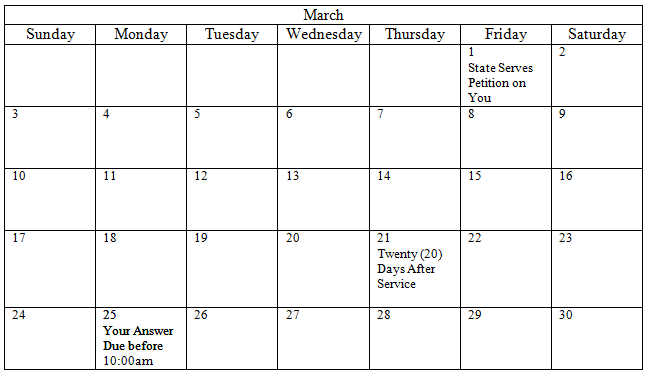After being served with a copy of the forfeiture suit, you should file an Answer. An Answer is your response to the State’s claims in their Petition.
You have only a limited amount of time in to file an Answer, or else you may lose the case. You should file an Answer before 10:00 a.m. in the court where the Petition was filed on or before the first Monday after 20 days have passed since the Petition was served on you. For example, if the Petition is served on you on Friday, March 1, you should file an Answer before 10:00 a.m. on Monday, March 25 because that is the first Monday that occurs after 20 days have passed (on Thursday, March 21) since the Petition was served on you.

Your Answer should either (a) generally deny all the claims made in the State’s Petition or (b) specifically deny each claim made in the State’s Petition (deny each statement in the Petition, one by one). It is also okay for you to say that you do not have enough facts to confirm or deny the claims made by the State in the Petition. A statement that you do not have enough facts works as a denial. Additionally, your Answer should include all defenses that you may potentially argue in court. See Question 18 for possible defenses.
For an example Answer, see "Defendant's Original Answer" in the Sample Pleadings Section of this Toolkit.
